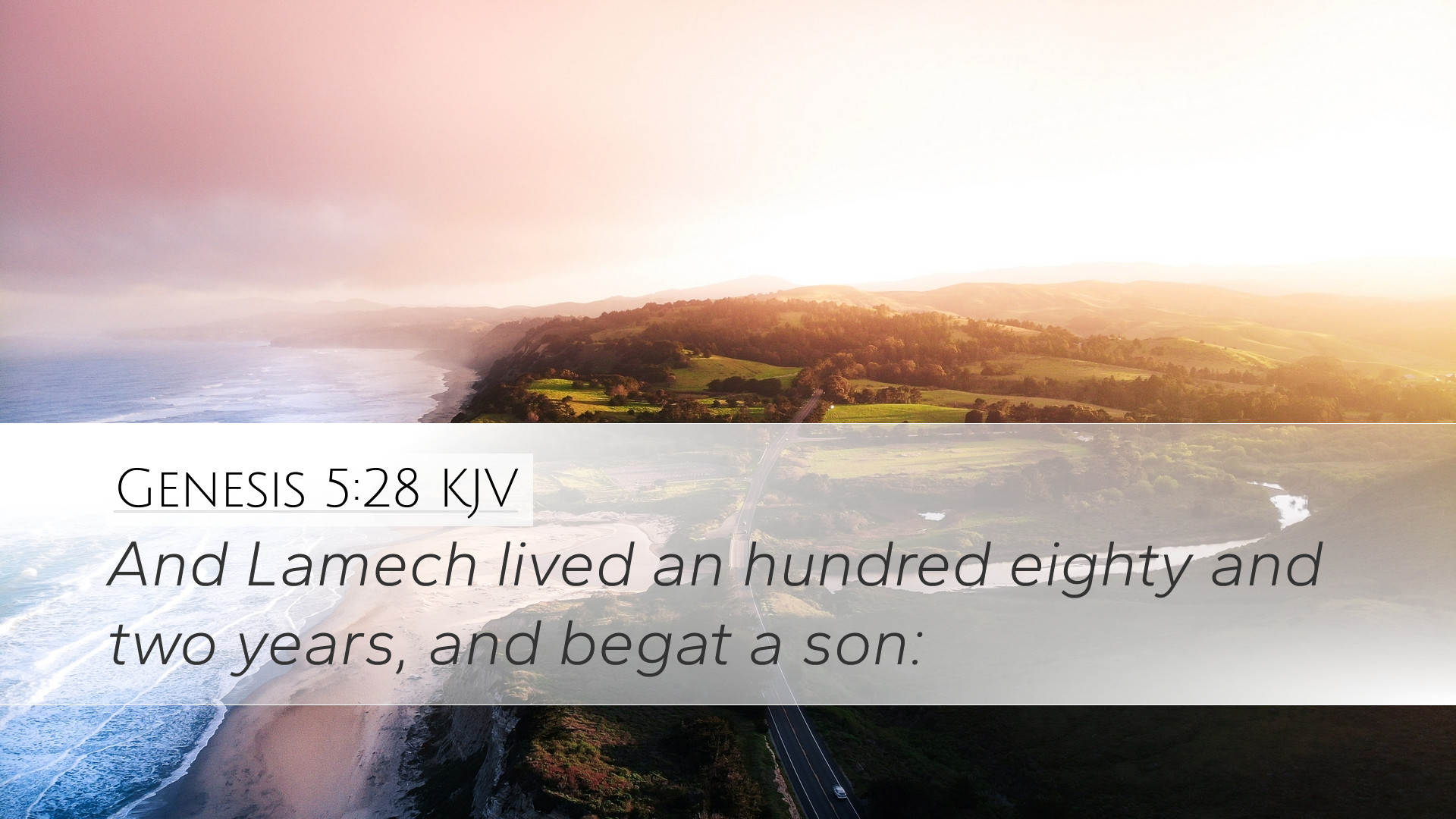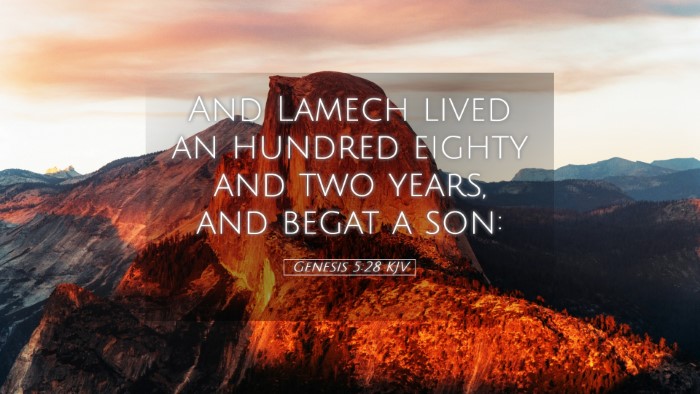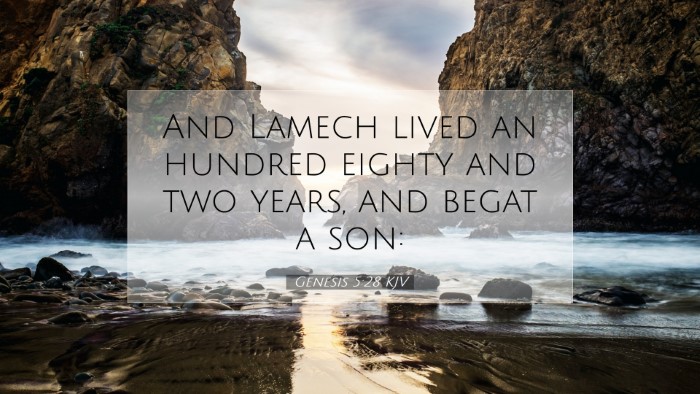Old Testament
Genesis Exodus Leviticus Numbers Deuteronomy Joshua Judges Ruth 1 Samuel 2 Samuel 1 Kings 2 Kings 1 Chronicles 2 Chronicles Ezra Nehemiah Esther Job Psalms Proverbs Ecclesiastes Song of Solomon Isaiah Jeremiah Lamentations Ezekiel Daniel Hosea Joel Amos Obadiah Jonah Micah Nahum Habakkuk Zephaniah Haggai Zechariah MalachiChapter
Genesis 1 Genesis 2 Genesis 3 Genesis 4 Genesis 5 Genesis 6 Genesis 7 Genesis 8 Genesis 9 Genesis 10 Genesis 11 Genesis 12 Genesis 13 Genesis 14 Genesis 15 Genesis 16 Genesis 17 Genesis 18 Genesis 19 Genesis 20 Genesis 21 Genesis 22 Genesis 23 Genesis 24 Genesis 25 Genesis 26 Genesis 27 Genesis 28 Genesis 29 Genesis 30 Genesis 31 Genesis 32 Genesis 33 Genesis 34 Genesis 35 Genesis 36 Genesis 37 Genesis 38 Genesis 39 Genesis 40 Genesis 41 Genesis 42 Genesis 43 Genesis 44 Genesis 45 Genesis 46 Genesis 47 Genesis 48 Genesis 49 Genesis 50Verse
Genesis 5:1 Genesis 5:2 Genesis 5:3 Genesis 5:4 Genesis 5:5 Genesis 5:6 Genesis 5:7 Genesis 5:8 Genesis 5:9 Genesis 5:10 Genesis 5:11 Genesis 5:12 Genesis 5:13 Genesis 5:14 Genesis 5:15 Genesis 5:16 Genesis 5:17 Genesis 5:18 Genesis 5:19 Genesis 5:20 Genesis 5:21 Genesis 5:22 Genesis 5:23 Genesis 5:24 Genesis 5:25 Genesis 5:26 Genesis 5:27 Genesis 5:28 Genesis 5:29 Genesis 5:30 Genesis 5:31 Genesis 5:32


Commentary on Genesis 5:28
Bible Verse: "And Lamech lived an hundred eighty and two years, and begat a son:" (Genesis 5:28 KJV)
Introduction
The genealogy presented in Genesis 5 chronicles the antediluvian patriarchs, illustrating the continuity of God's plan through generations. Genesis 5:28 focuses on Lamech, one of the significant figures preceding the flood. This verse not only marks the birth of Lamech’s son but also serves as a pivotal moment in the unfolding narrative of human history.
Exegesis of Genesis 5:28
The name "Lamech" is derived from the Hebrew root meaning "to be strong" or "powerful". This etymology can suggest variations in meaning and implications for Lamech’s character and lineage. Matthew Henry notes that Lamech represents the culmination of the line of Seth, a contrast to that of Cain, indicating a branch of humanity aimed at restoring righteousness.
Family Context
Interpretation of "Begat a Son"
In the biblical text, the phrase "begat a son" serves as a vital marker of lineage. The birth of this son opens the possibility of new beginnings and divine purpose in the human saga. The anticipation of who this son may be creates an essential thematic tension in the text. Matthew Henry suggests that Lamech had high hopes for the child, which would reflect his desires for redemption within the corrupt world of his time.
Theological Implications
This passage holds significant theological insights that resonate with various perspectives within Christian doctrine:
Comparative Analysis
In comparing Lamech to his predecessors, we can discern unique characteristics:
Conclusion
Genesis 5:28 captures a moment of significance in the biblical narrative, marked by hope and the promise of the future. The life of Lamech and the birth of his son signify much more than mere genealogy; they encapsulate theological truths about God's nature, His faithfulness to humanity, and the unfolding redemptive history. For pastors and theologians, this verse tenderly reminds us that God operates through imperfect human stories, carrying forth His purpose in space and time.
Reflection Questions